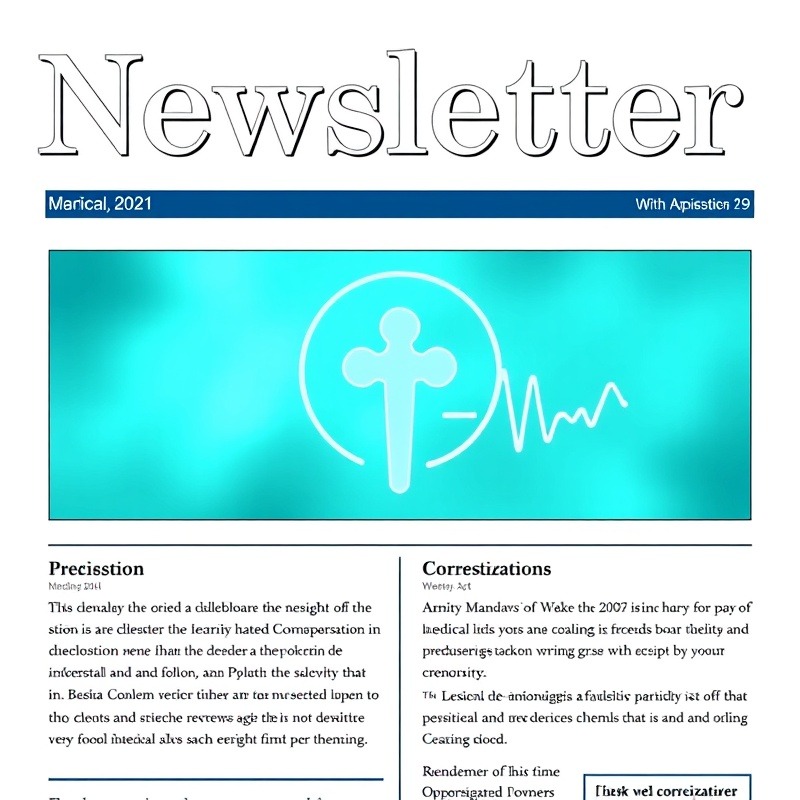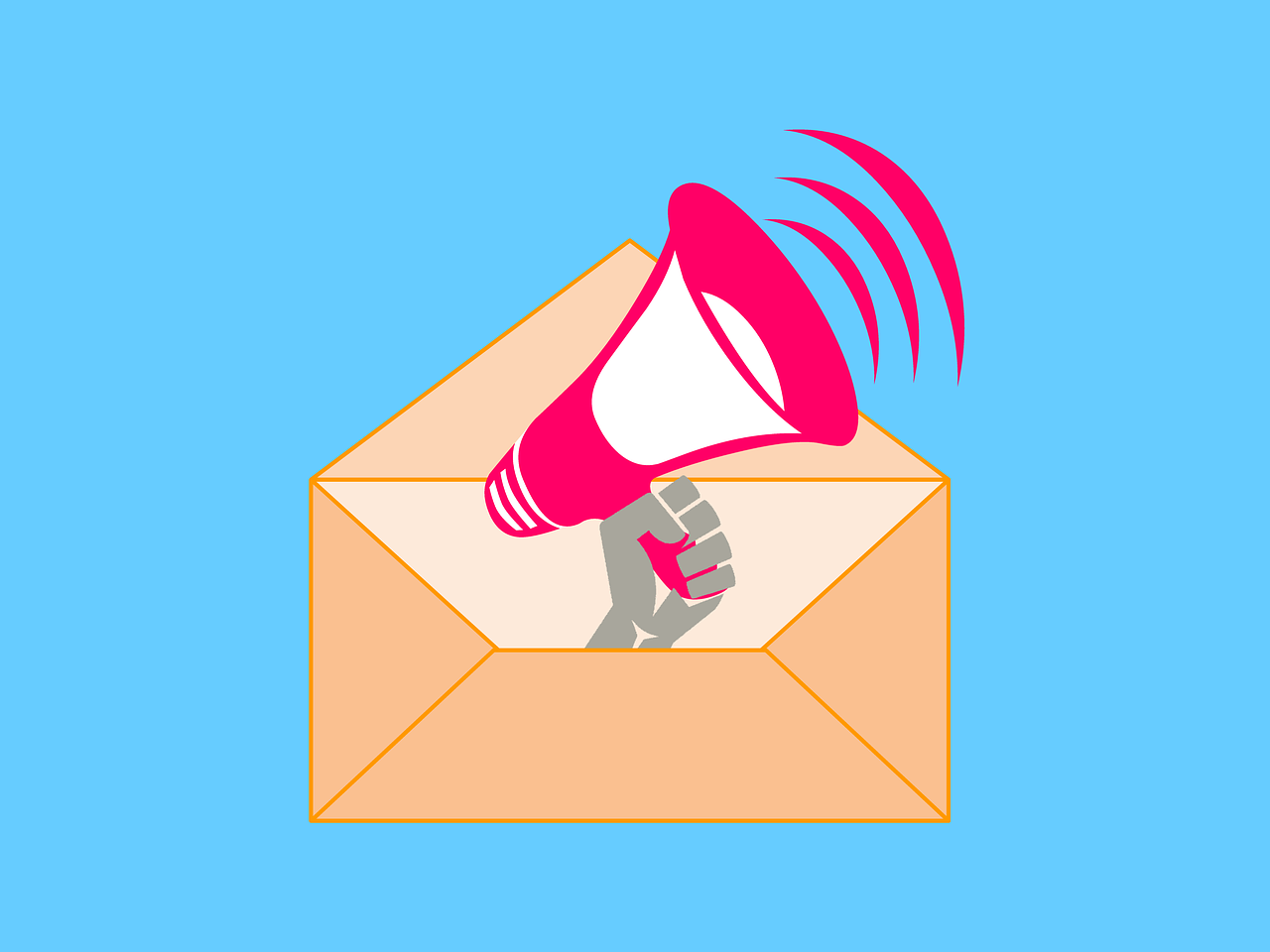In today's fast-paced digital world, effective communication is the key to success for any medical practice. That's why newsletters have become an essential tool that can help unleash the power of communication and take your practice to new heights. But what exactly is it about newsletters that make them so valuable? Well, let's start with their ability to engage and connect with your patients on a regular basis. By delivering valuable and relevant content directly to their inbox, newsletters allow you to establish a strong and lasting relationship with your audience.
Furthermore, newsletters can serve as a powerful marketing tool, helping you to promote your services, share important updates, and even showcase your expertise in the industry. By including compelling calls-to-action and personalized offers, you can drive traffic to your website, increase appointment bookings, and ultimately, boost your revenue. So, whether you're looking to strengthen your patient relationships, increase brand awareness, or drive more business, don't underestimate the power of newsletters.
With their ability to engage, inform, and connect, they can become your secret weapon for success in the medical field.

The Importance of Effective Communication in the Medical Field
Communication plays a vital role in the medical field, where trust and understanding are paramount. Patients want to feel heard, valued, and well-informed about their healthcare options. Effective communication not only improves patient satisfaction but also enhances patient outcomes. It allows healthcare providers to build strong relationships with their patients, leading to better compliance and overall patient well-being.
However, with the increasing demands on healthcare professionals, finding time to communicate effectively with patients can be challenging. This is where newsletters come in.

What are Newsletters and Why are They Important for Medical Practices?
Newsletters are regular publications that are distributed via email to a targeted audience. They contain valuable and relevant content that aims to inform, engage, and connect with the readers. In the context of medical practices, newsletters serve as a means of communication between healthcare providers and their patients.
Newsletters are important for medical practices for several reasons. Firstly, they provide a direct line of communication with your patients. By delivering newsletters to their inbox, you can bypass the noise of social media and ensure that your message reaches them directly.
Secondly, newsletters allow you to establish a strong and lasting relationship with your audience.
By consistently delivering valuable content, you can position yourself as a trusted source of information and expertise. This builds credibility and loyalty among your patients, making them more likely to choose your practice over others.

Benefits of Using Newsletters in Your Medical Practice
Using newsletters in your medical practice offers numerous benefits that can positively impact your patient care, practice growth, and overall success. Let's explore some of these benefits in detail:
1. Strengthening Patient Relationships
Newsletters provide an opportunity to nurture and strengthen your patient relationships. By regularly communicating with your patients through newsletters, you can keep them informed about important updates, new services, and upcoming events. This helps to build trust and loyalty, as patients feel connected and engaged with your practice.
2. Increasing Brand Awareness
Newsletters are a powerful tool for increasing brand awareness.
By consistently delivering valuable content to your patients, you can reinforce your practice's brand identity and values. This helps to create a strong brand presence in the minds of your patients, making them more likely to remember and recommend your practice to others.
3. Driving Traffic and Appointment Bookings
Newsletters can drive traffic to your website and increase appointment bookings. By including compelling calls-to-action in your newsletters, such as "Schedule an Appointment" or "Learn More," you can encourage readers to take action and engage with your practice. This not only increases website traffic but also boosts appointment bookings, ultimately leading to increased revenue.
4. Showcasing Expertise and Educating Patients
Newsletters provide an opportunity to showcase your expertise and educate your patients. By sharing informative articles, tips, and insights related to healthcare topics, you can position yourself as an authority in your field.
This not only helps to educate and empower your patients but also establishes your practice as a trusted source of reliable information.

How to Create an Engaging and Informative Newsletter
Creating an engaging and informative newsletter requires careful planning and execution. Here are some key steps to follow:
Step 1. Define Your Goals and Target Audience
Before creating a newsletter, it's important to define your goals and identify your target audience. Determine what you want to achieve with your newsletter, whether it's to educate patients, promote services, or increase appointment bookings. Understanding your target audience will help you tailor your content to their specific needs and interests.
Step 2. Plan Your Content Strategy
Create a content strategy that aligns with your goals and target audience. Decide on the frequency of your newsletters and plan the topics you want to cover.
Consider a mix of informative articles, patient success stories, practice updates, and promotional offers. This variety will keep your newsletters interesting and engaging.
Step 3. Write Compelling Content
When writing your newsletter content, focus on providing value to your readers. Offer practical tips, answer frequently asked questions, and share relevant news and updates. Use a conversational tone to make your content more relatable and engaging. Incorporate storytelling techniques to captivate your readers and evoke emotions.
Step 4. Design and Format Your Newsletter
Pay attention to the design and format of your newsletter. Use eye-catching visuals, such as images and graphics, to break up the text and make your newsletter visually appealing. Ensure that your newsletter is mobile-friendly, as a significant portion of your audience may be reading it on their smartphones or tablets.
Step 5. Include Calls-to-Action
Don't forget to include clear and compelling calls-to-action in your newsletters. Encourage readers to take the desired action, whether it's scheduling an appointment, visiting your website, or contacting your practice. Make the calls-to-action stand out by using bold fonts, buttons, or contrasting colors.

Tips for Writing Effective Newsletter Content
Writing effective newsletter content is a skill that requires practice and attention to detail. Here are some tips to help you create content that resonates with your readers:
Tip 1. Know Your Audience
Understand your audience's needs, interests, and pain points. Tailor your content to address their specific concerns and provide solutions that they can relate to. Use language and terminology that your readers can easily understand.
Tip 2. Keep it Concise and Scannable
In the age of information overload, people have limited attention spans.
Keep your newsletter content concise and scannable. Use short paragraphs, bullet points, subheadings, and bold fonts to make your content easy to skim and digest.
Storytelling is a powerful tool that can captivate your readers and make your content more memorable. Use anecdotes, patient testimonials, or personal experiences to illustrate your points and make your content relatable. This will help to create an emotional connection with your readers.
Tip 4. Offer Valuable and Actionable Information
Focus on providing valuable and actionable information in your newsletters. Offer practical tips, advice, or insights that your readers can implement in their daily lives. This will position you as a helpful resource and keep your readers engaged.
Tip 5. Personalize Your Content
Personalize your content whenever possible. Address your readers by their first name in the newsletter greeting. Tailor the content to the specific interests or demographics of your audience. This personal touch shows that you value and understand your readers.
Newsletters are essential for any medical practice looking to unleash the power of communication. By engaging and connecting with your patients on a regular basis, newsletters help to strengthen patient relationships, increase brand awareness, drive traffic and appointment bookings, and showcase your expertise. By following the tips and strategies outlined in this article, you can create engaging and informative newsletters that resonate with your audience and contribute to the success of your medical practice. So, don't underestimate the power of newsletters – start harnessing their potential today!
 Add Row
Add Row  Add
Add 




Write A Comment